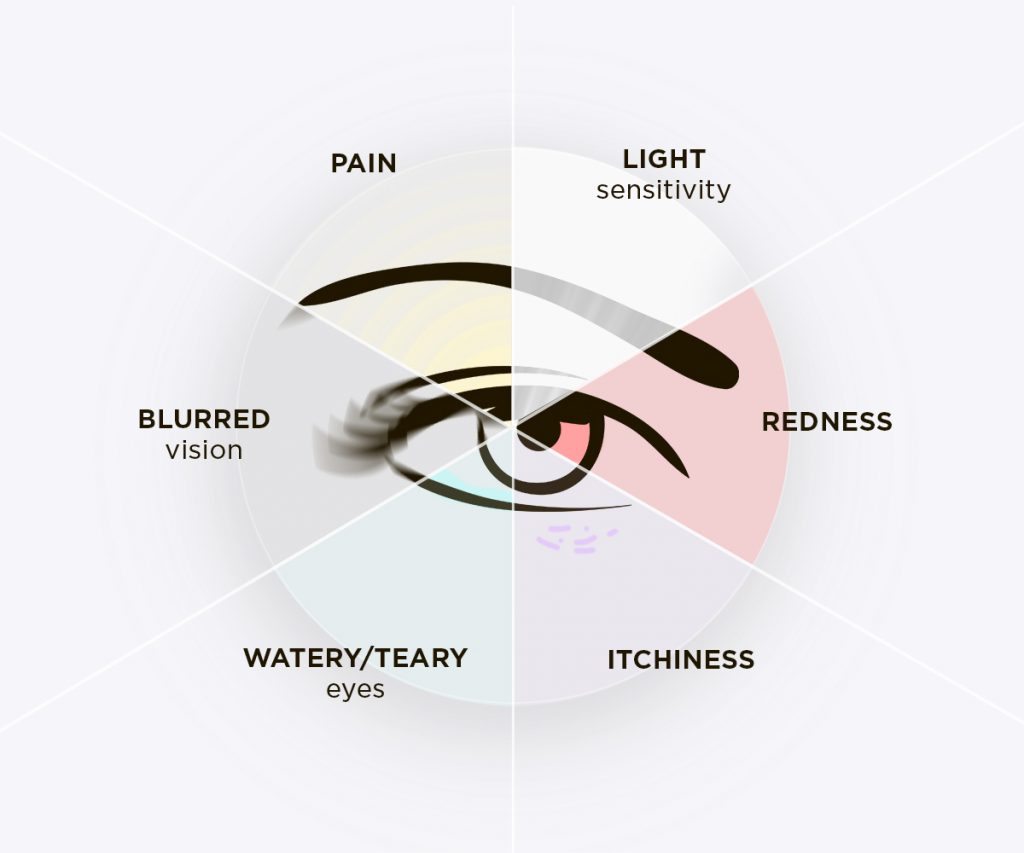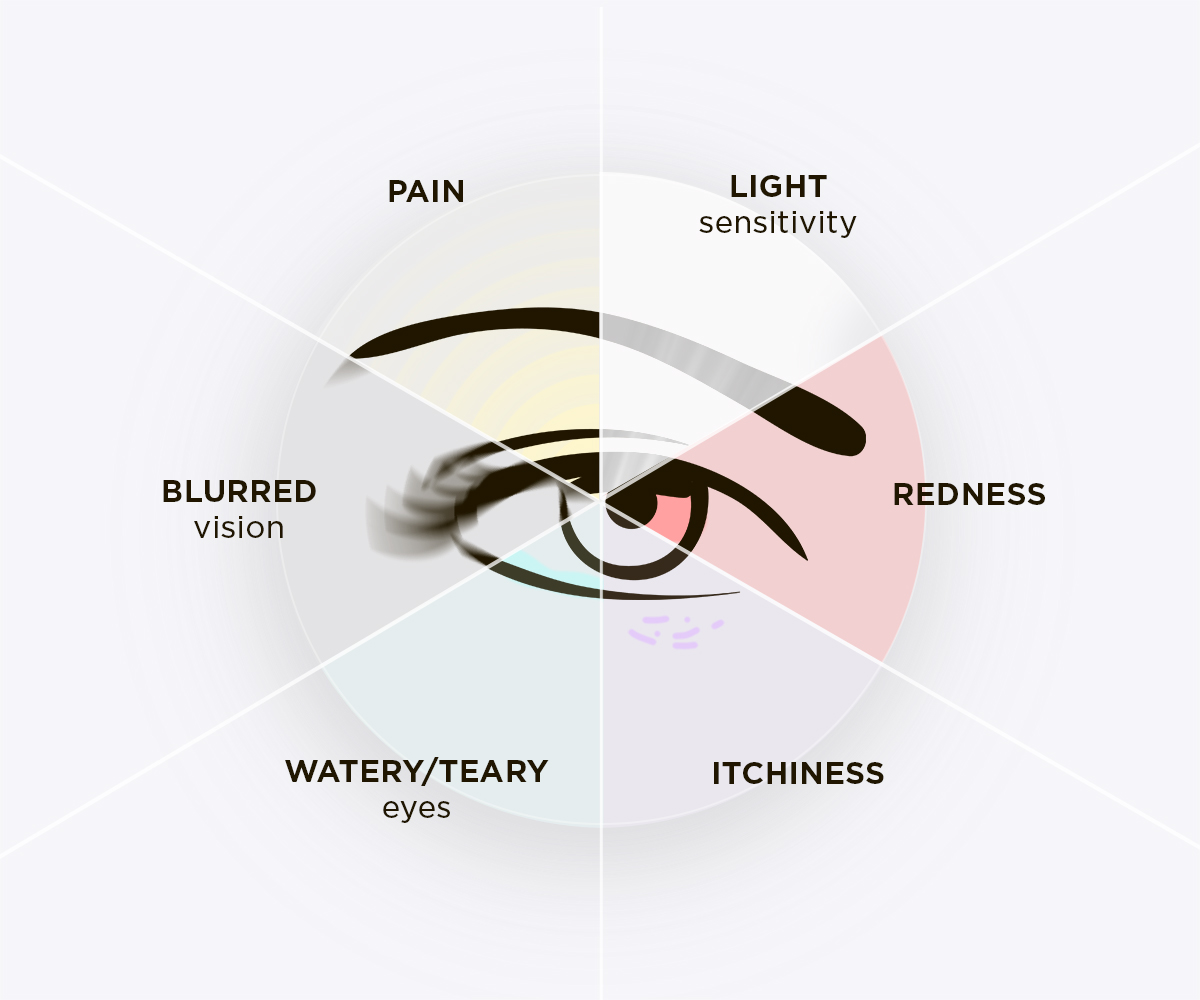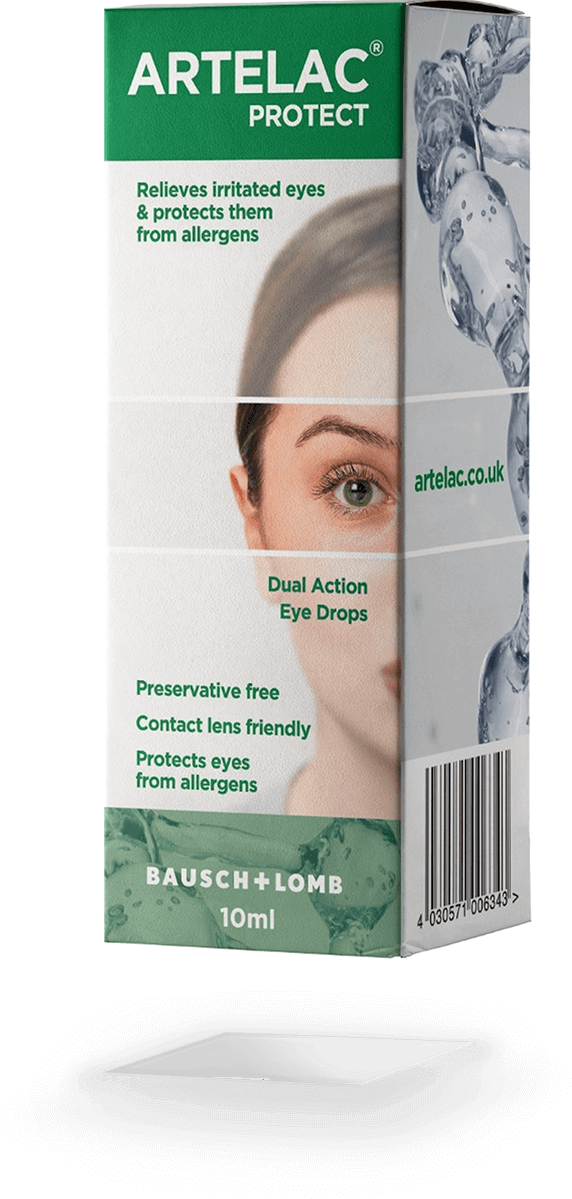Red eyes are extremely common and can occur in anyone for a number of reasons. A red eye is usually nothing concerning and it often gets better on its own. While it rights itself, however, it can cause some discomfort and may impact your self-esteem. Persistent red, irritated eyes could also be a sign of something a little more serious and you may need drops or medical help to get them feeling normal again1.
What are red eyes?
Red eye occurs when the film over the white of the eye, also known as the conjunctiva, becomes ‘bloodshot’ which is why the eye appears redder. This happens when the tiny blood vessels dilate and become inflamed2.
The condition can look different from person to person, and can range from appearing as if there are red lines running through the eye to the entirety of the white of the eye being red.
A range of symptoms can present themselves alongside the change in colour such as burning, itching, dryness and eyes can feel painful and irritated. It is usually nothing to worry about, though it can sometimes be an indicator of another eye condition3.

What causes red eye?
There are four common factors which can cause eyes to become red and painful.
1. Allergies and irritants
Many people want to rub their eyes when they become irritated or are experiencing an allergic reaction. When it comes to the allergen culprits, it’s usually pollen and dust which cause our eyes to become uncomfortable. These can all cause redness and discomfort and often lead to eyes becoming red, itchy and watery4.
Another irritant is foreign matter. If you get a particle such as dirt in your eye it can sometimes scratch or irritate the surface which can also lead to it becoming red and sore. However in most cases your optician will be able to easily flush this out for you and you may be given treatment5.
2. Eye infections
When your eye becomes infected it can become painful and sore. Conjunctivitis is often caused by an infection and can also lead to eyes becoming itchy and watery as well as resulting in sticky eyelashes6. If you have conjunctivitis the thin layer of tissue which covers your eyeball and the inner eyelid can become inflamed and as the blood vessels swell it can cause the red appearance3. However depending on what has caused the infection, treatment such as drops can be given to clear it.
3. Eye strain
If you’re straining your eyes to see or pressure is put on them through coughing or sneezing, this can sometimes cause a blood vessel in the eye to burst. While this can often look worrying, it is usually nothing to be alarmed about and tends to clear up on its own7.

Digital eye strain, from staring at a phone, television or computer screen for too long, is also something to be mindful of, as this can also lead to dry eyes8. Eyes can feel strained, tired and dry from wearing contact lenses too.
4. Eye condition
Certain eye conditions can also result in the eye becoming red and sore too. Iritis is the inflammation of the iris – the coloured part of the eye. This can cause red eye, sensitivity to light and blurred vision but can be cleared up with steroid medication.
Having a very painful and red eye can also be an indicator of acute glaucoma. Other symptoms of this include blurred vision, nausea and seeing haloes around lights. If not treated quickly, glaucoma can cause permanent vision loss so it is essential if you are experiencing these symptoms to get it checked out as early as possible and have regular eye tests9.
How do you treat and prevent red eyes?
More often than not red eye will correct itself after a week or two, but if the condition is painful or has come on suddenly, it is always advisable to visit your optician.
Your optician will be able to identify if your red eye is a sign of anything more serious, and may recommend steps to make the eye feel more comfortable. Eye drop solutions such as ARTELAC® PROTECT can be used to treat and prevent symptoms of seasonal allergens, helping with lubrication of red, irritated eyes.
Avoiding triggers which can lead to the eyes becoming sore and red, or taking measures to limit your exposure to them is also recommended. For instance wearing sunglasses can limit pollen coming into contact with your eyes10 and making sure you wear goggles while swimming can also help11.
It is also wise to hold off on wearing contact lenses, should you require them, and avoid rubbing your eyes as this can add to any discomfort and irritation.
References
- NHS: Red eye. Available online at: https://www.nhs.uk/conditions/red-eye/ Accessed on: October 2019
- Best Practice Journal (BPAC), 2013. Causes, complications and treatment of a red eye. [pdf] Available at: https://bpac.org.nz/BPJ/2013/August/docs/BPJ54-pages8-21.pdf Accessed on: February 2020
- Medical News Today: Common causes of red eye. https://www.medicalnewstoday.com/articles/316179 Accessed on: February 2020
- Review of Ophthalmology: Dry Eye or Allergy: How to Make the Call. Available online at: https://www.reviewofophthalmology.com/article/dry-eye-or-allergy-how-to-make-the-call Accessed on: February 2020
- Medical News Today: Foreign object in eye: Treatment and home remedies. Available online at: https://www.medicalnewstoday.com/articles/322236.php Accessed on: October 2019
- NHS: Conjunctivitis. Available online at: https://www.nhs.uk/conditions/conjunctivitis/ Accessed on: October 2019
- Mayo Clinic: Eyestrain. Available online at: https://www.mayoclinic.org/diseases-conditions/eyestrain/symptoms-causes/syc-20372397?page=0&citems=10 Accessed on: February 2020
- The Vision Council: Digital eye strain. Available online at: https://www.thevisioncouncil.org/content/digital-eye-strain Accessed on: October 2019
- National Eye Institute: Glaukoma. Available online at: https://www.nei.nih.gov/learn-about-eye-health/eye-conditions-and-diseases/glaucoma Accessed on: February 2020
- Eyecare Trust: Hints and tips for hay fever sufferers. Available online at: https://www.eyecaretrust.org.uk/view.php?item_id=499 Accessed on: October 2019
- VSP: How swimmers get red eyes and how they can get relief. Available online at: https://www.vsp.com/eyewear-wellness/eye-health/red-eyes Accessed on: October 2019

